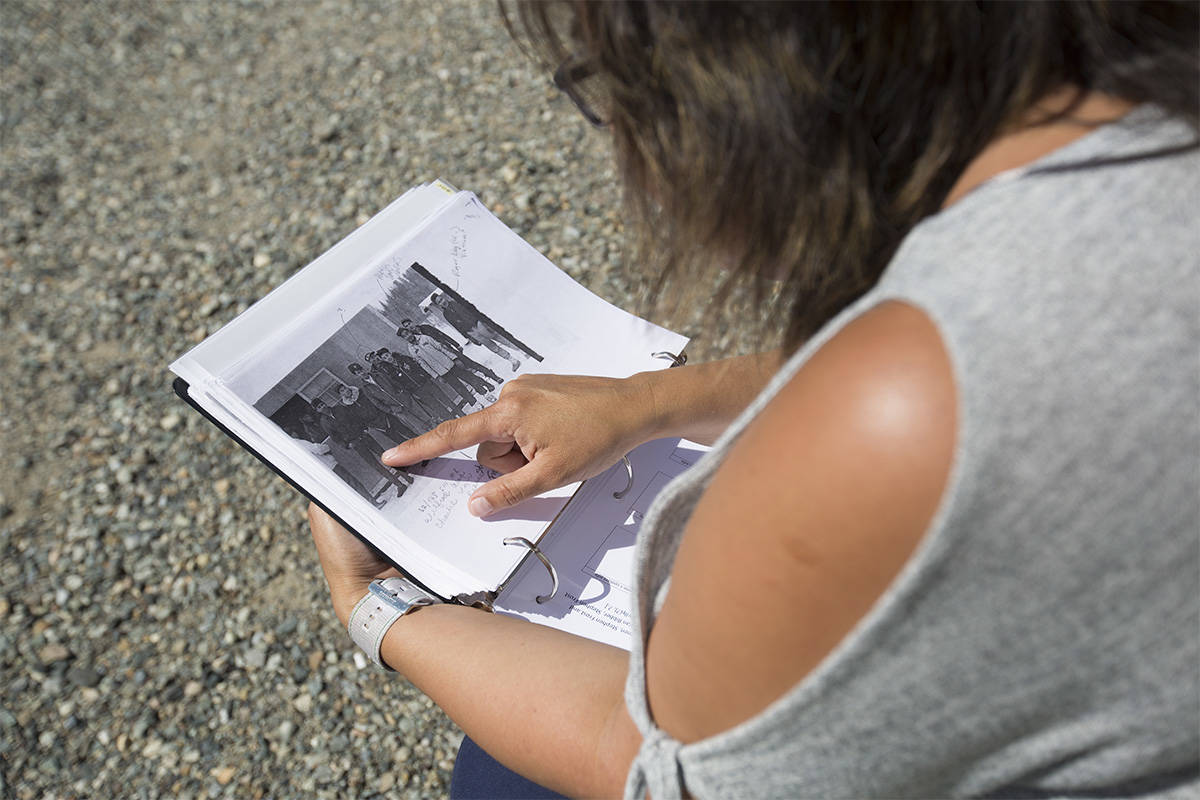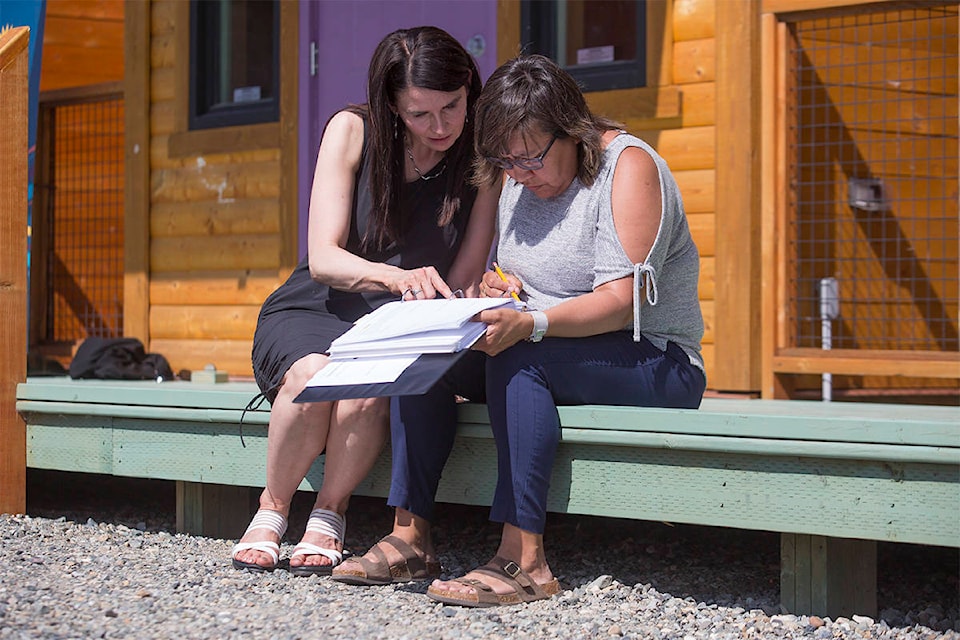Shirley Dawson and Shirley McLean are sitting on the front steps of the cultural cabins behind the Kwanlin Dün Cultural Centre in Whitehorse, flipping through a thick binder of black-and-white photographs. Their eyes scan the faces staring back at them from the pages — the women don’t recognize any of them.
And then, a photo of the Skookum Jim/Keish Tlingit Dancers in their regalia.
“Hey, that’s you!” Dawson says, pointing at a little girl in the front row.
“That’s not me,” McLean replies, but then leans in to get a closer look. “Oh wait, that is me!”
Moments like these — sudden sparks of recognition, a name put to a face — have come to define the Yukon Archives’ First Nations photo identification project, an initiative to identify First Nations people in photos that Whitehorse Star photographers took between 1959 and 1979. The newspaper later donated nearly 40,000 photos from that time period to the Yukon Archives’ collection, but many of them were missing information about the subjects in the images.
Earlier this year, Yukon Archives staff picked out about 600 photos featuring Yukon First Nations people and events that were lacking descriptive information. They’re taking these images to public events this summer in hopes that attendees might recognize the people in the pictures and be able to fill in the blanks on details like names, clans and the contexts under which the photos were taken.
The project was at the Adäka Cultural Festival in Whitehorse, where Dawson, McLean and dozens of others looked through the binders of photos, and will also be at the Moosehide Gathering in Dawson City later this month.
In a phone interview June 27, reference archivist Nadine Helm said that identifying the people in the Star collection is important because when details like names, titles and the subjects’ relationships to each other are missing, the images only tell a partial story.
“All the materials that we have, they’re used by researchers, writers … members of the public, and so if there’s no identification, it has less value and (relevance) because you don’t know who’s in the photo or where the photo was taken or an exact date,” she said. “And then each photo tells a story and … you can’t really know that story or tell that story if you don’t have all the information about it.”
The project is prioritizing identifying First Nations individuals in particular, Helm said, because First Nations history has been historically underrepresented in Canada’s archival collections.
“A goal for us here at the archives is to help increase the representation of Yukon’s First Nations in our archival collections,” she said.
This is the second time the Yukon Archives has run this type of photo identification project for the Star collection. The first version of the project was run in 2009 to 2010, when elders, researchers and other members of the public helped provide identification information for 1,500 pictures.
Helm said she’s hopeful that the project will be as successful this time around.
“We’re hoping we get a really good response from the public and that we can just add as many identifications as possible,” she said.
“The photos in the Whitehorse Star collection, the majority date from the late 1950s to the late 1970s, so as that generation ages, there’s going to be fewer people that were around during those events, that can help recognize the events and help identify, so that’s another reason why we decided to work on it this summer. We wanted to make sure we try to get more identification while it’s still in people’s living memory.”
Yukon Minister of Tourism and Culture Jeanie Dendys visited the project at the Adäka Cultural Festival July 4 and echoed the importance of having the full context and identification information for historical pictures.
“It’s important because really, we want the full history of the Yukon and we want the full stories of Indigenous cultures and … where we were and where we are today and that there was a history here before the Gold Rush,” she said. “I think that’s an important part of the story to tell about the Yukon … It’s about completing the whole story, always, you know?”
Dendys, who spent some time flipping through the binders herself, added that it was “nostalgic” for her to look over the photos.
“I am looking for family faces,” Dendys said. “I am hoping I’ll see some of my family, I have a huge family here in the Yukon and they’re always involved in the community and I’m hoping to find some of them and identify them.”
Dawson, who was able to identify at least a half-dozen other faces, told the News she was also there for personal reasons.
“It’s really awesome to be able to look at some of the old pictures and see. I was hoping I could find a picture of my grandma or my mom, you know?” she said.
She flipped to a picture of a young boy and studied it for a moment. Someone else had written “Charlie?” or “John Charlie?” at the bottom of the image in pencil, but Dawson said she thought she recognized him as someone else.
“That looks like Charlie Chief,” she said, using her own pencil to leave a note on the page.
Contact Jackie Hong at jackie.hong@yukon-news.com

